EIP19 (Empirical Research in Psychology), Belgrade, Serbia
12:45-14:15, March 30, 2019
Two types of spatial color mixtures and color illusions
Akiyoshi KITAOKA, Ritsumeikan University, Osaka, Japan email
since March 22, 2019 Abstract - Handout 1 - Handout 2 - Handout 3

"Tram color illusion"
The tram appears to be bluish, though they are reddish.
Copyright Akiyoshi Kitaoka 2015 (January 5)

"Akiyoshi Kitaoka with an illusory reddish face"
The face appears to be reddish, though the pixels are green-bluish (cyan hue).
Copyright Akiyoshi Kitaoka 2017 (April 10)
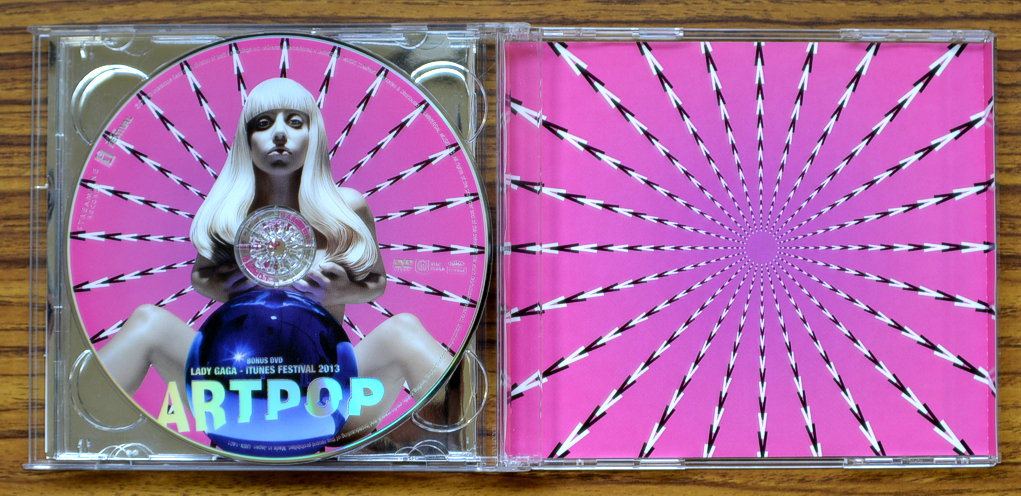
Kitaoka, A. (2014). Visual illusion in ARTPOP and pop art. Japanese Journal of Psychonomic Science, 32(2), 232-234. PDF --- PDF (scanned copy)
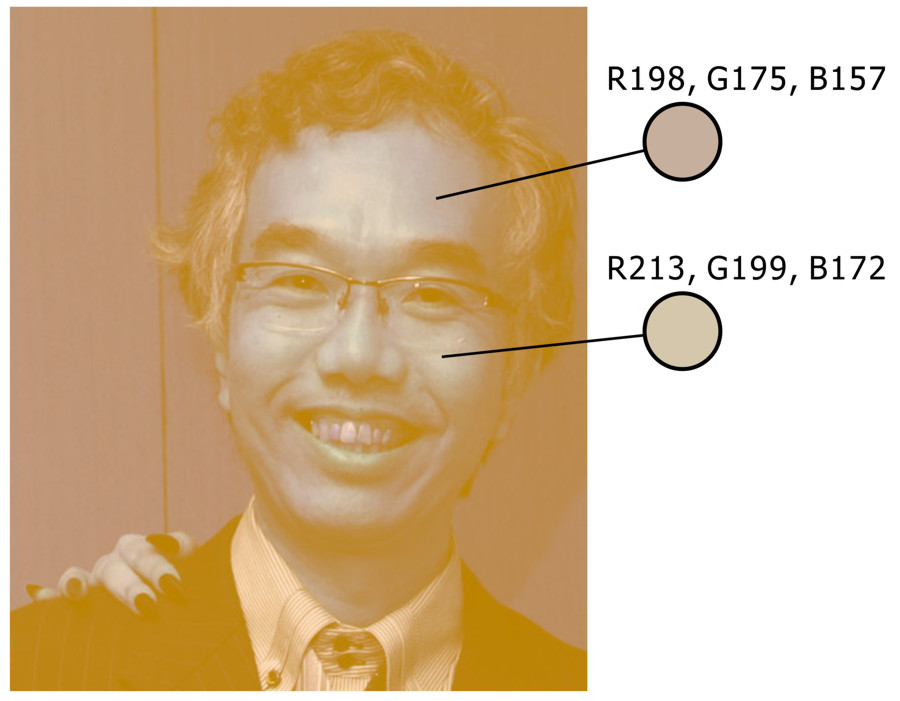
"Akiyoshi Kitaoka with an illusory bluish face"
The face appears to be bluish, though the pixels are skin color (yellowish orange).
Copyright Akiyoshi Kitaoka 2017 (April 10)
"Vein color illusion"
Veins appear to be bluish, though they are not.
Copyright Akiyoshi Kitaoka 2014 (April 24)

"Vein color illusion"
The train cars appear to be bluish, though the pixels are yellowish.
Copyright Akiyoshi Kitaoka 2018 (September 9) (caption February 12, 2019)

(γ = 1.2, α = .48)
Strawberries appear to be reddish, though each pixel is cyan hue.
Copyright Akiyoshi Kitaoka 2019 (February 20)

How to make a transformed image with alpha blending
Copyright Akiyoshi Kitaoka 2019 (February 20)

Strawberries appear to be bluish, though each pixel is yellow hue.
Copyright Akiyoshi Kitaoka 2019 (February 20)

(γ = 1.2, α = .48)
Strawberries appear to be bluish, though each pixel is yellow hue.
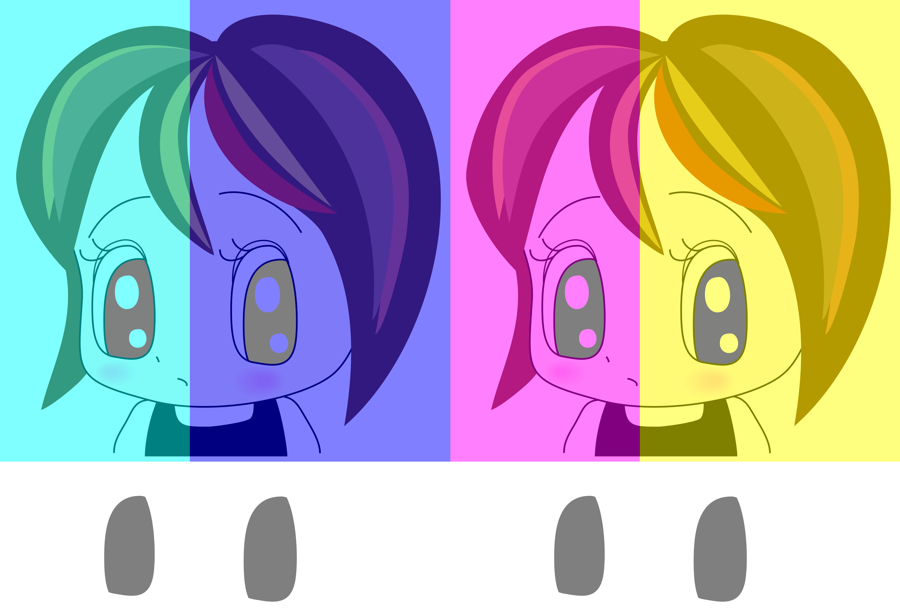
"Eye color illusion"
Eyes appear to be reddish, yellowish, greenish and bluish, though they are gray as shown below.
Copyright Akiyoshi Kitaoka 2017 (June 23) (updated on February 20, 2019)
The hypothesis of "histogram equalization" proposed by Shapiro et al. (2018) can explain these phenomena.
Shapiro, A., Hedjar, L., Dixon, E., and Kitaoka, A. (2018). Kitaoka's tomato: Two simple explanations based on information in the stimulus. i-Perception, 9(1), January-February, 1-9. PDF (open access)

Three different color changes to show color constancy
1. Multiplicative color change (standard filtering)
2. Additive color change (alpha blending)
3. Two-color method (Land's method)
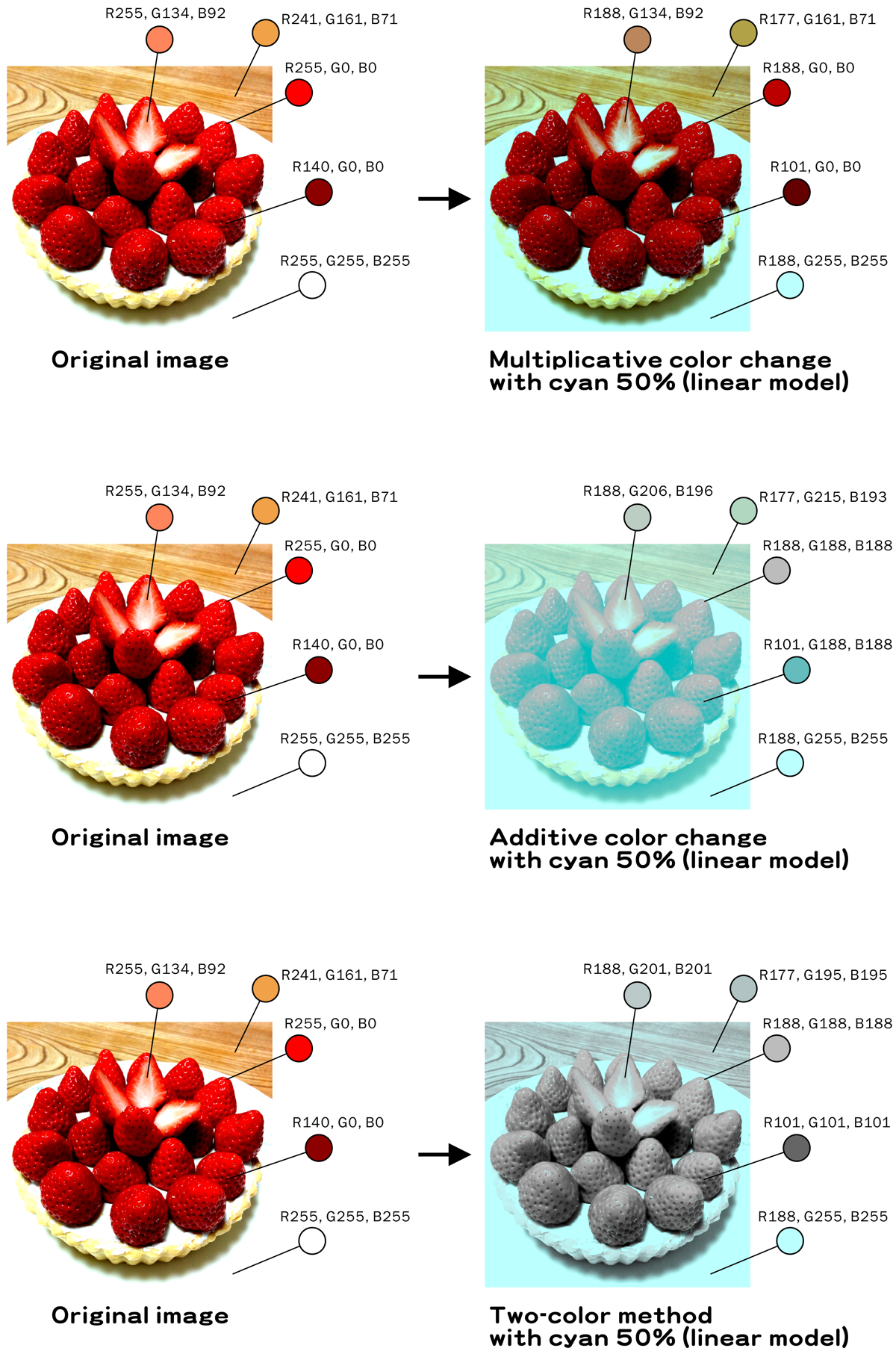
The hypothesis of "histogram equalization" assumes that a natural image should include a fully distributed histogram for each color channel.
Additive color change (alpha blending)

additive color change↓ ↑histogram equalization
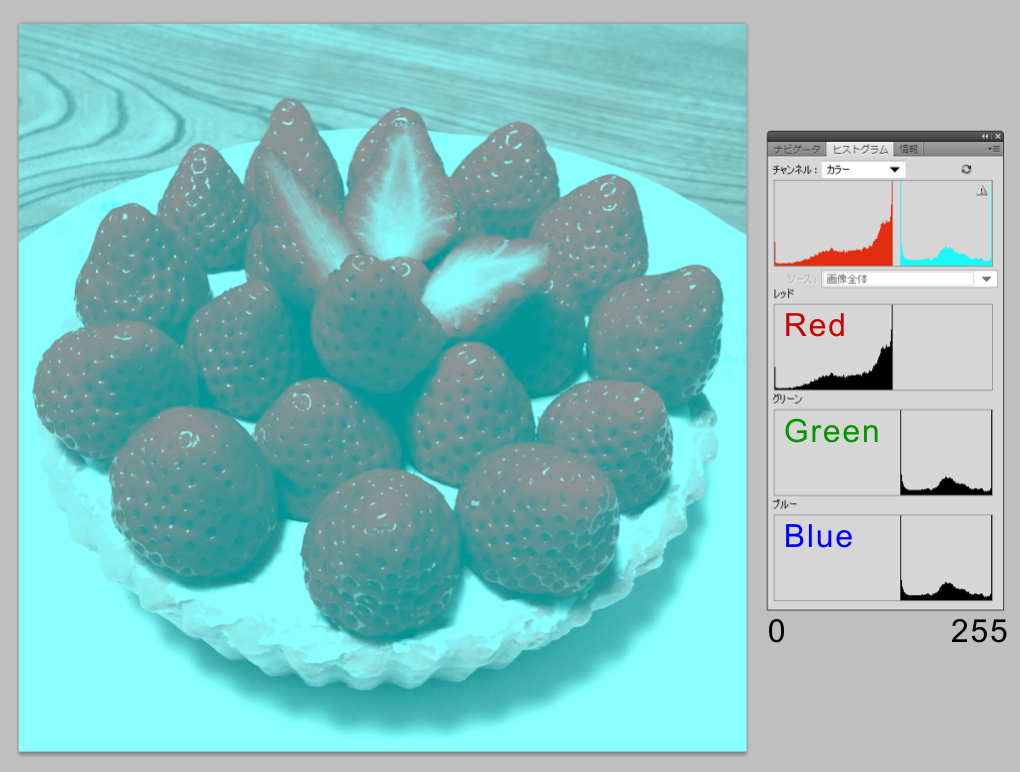

histogram compression↓ ↑histogram equalization

Multiplicative color change (standard filtering, e.g. use of a color filter)

multiplicative color change↓ ↑histogram equalization
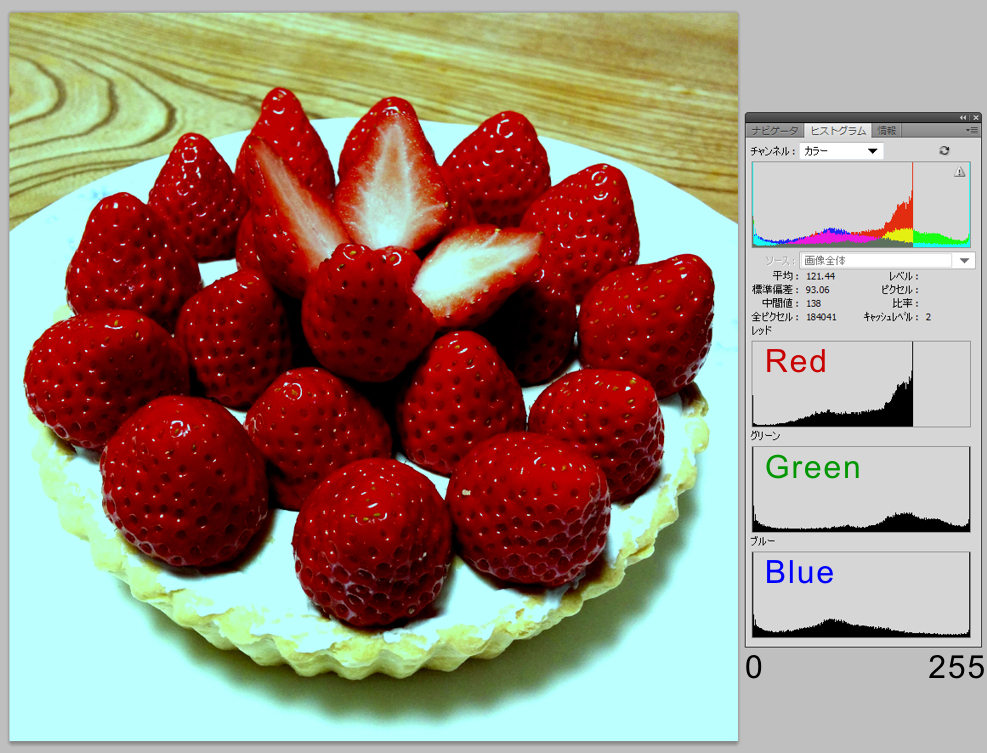
Two-color method (Land's method)

color change with the two-color method (Land's method)↓
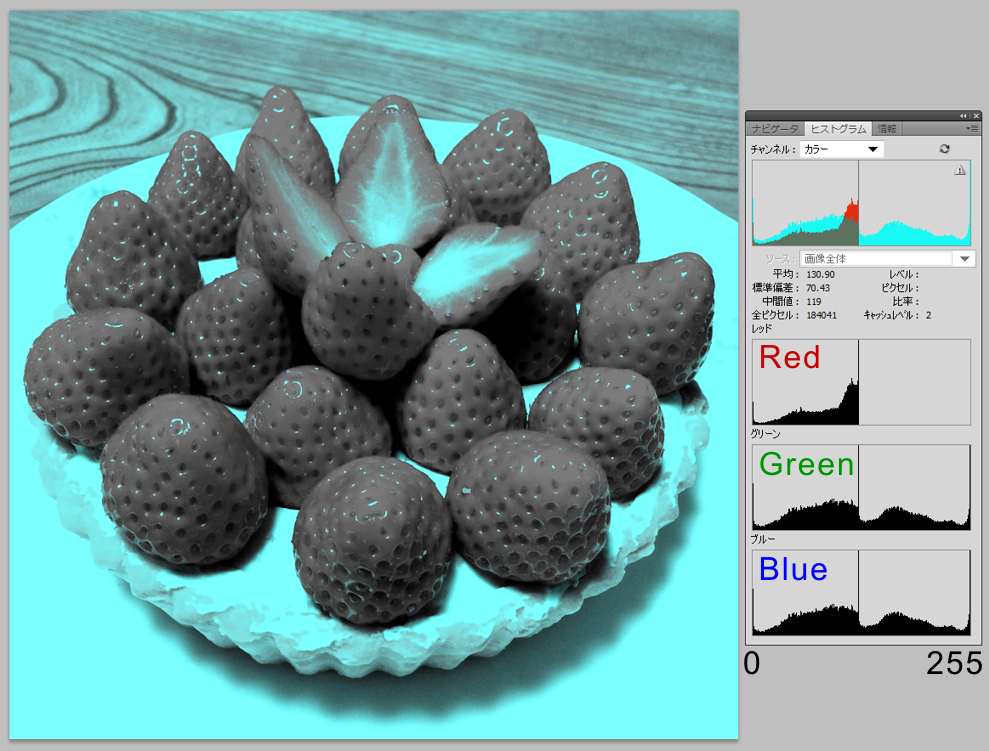
histogram equalization↓ ↑multiplicative color change

How to make an image with the two-color method (Land's method)

In image E, the tram appears to be bluish, though all the pixels are reddish.
Two types of achromatic color changes showing perceptual transparency or translucency

Achromatic multiplicative color change compresses the distribution to the
lower side
(giving perceptual transparency). ↓
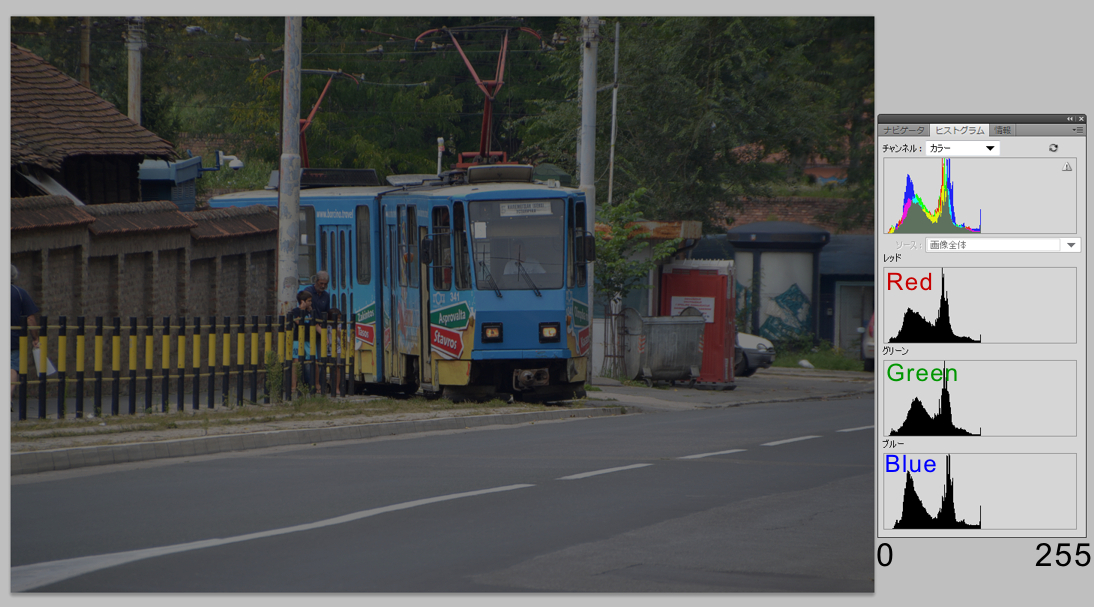
Note: White is represented by medium gray.

Achromatic additive color change compresses the distribution to the
upper side
(giving perceptual translucency). ↓

Note: Black is represented by medium gray.

↓Achromatic multiplicative color change (left) and achromatic additive color change (right)↓
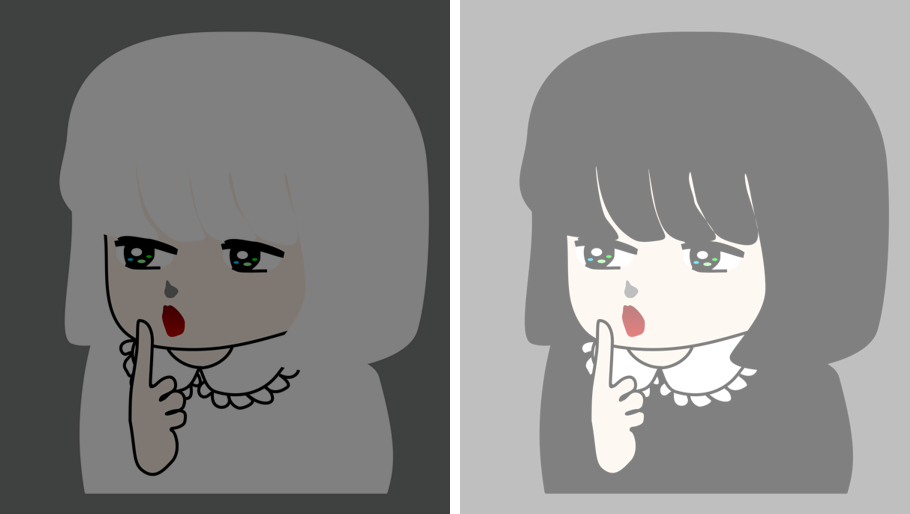
The hair and clothes in the left image appear to be whitish whereas those
in the right one to be blackish, though they are the same luminance.
New color illusions

Additive color mixture image (left) and subtractive color mixture image (right)
"White and black with RGB"
The hair and clothes in the left image appear to be whitish whereas those in the right one to be blackish, though they consist of the same RGB (red, green, blue) stripes.
Copyright Akiyoshi Kitaoka 2016 (August 15)
Expanded image

Movie demo

Spatial color mixture consists of additive color mixture and subtractive one.
Additive color mixture

Subtractive color mixture

Spatial color mixture: additive color mixture (left) and subtractive one (right)

Standard color mixture with three elemental colors

(R: red, G: green, B: blue, C: cyan, M: magenta, Y: yellow, K: black, W: white)
Spatial color mixture with three elemental color subpixels

Spatial color mixture with six subpixels


"White and black with CMY"
The hair and clothes in the left image appear to be whitish whereas those in the right one to be blackish, though they consist of the same CMY (cyan, magenta, yellow) stripes.
Copyright Akiyoshi Kitaoka 2016 (August 15)
Spatial color mixture with two colors

"White and black with red and cyan"
The hair and clothes in the left image appear to be whitish whereas those in the right one to be blackish, though they consist of the same red-cyan stripes.
Copyright Akiyoshi Kitaoka 2018 (May 20)
Spatial color mixture with two color subpixels
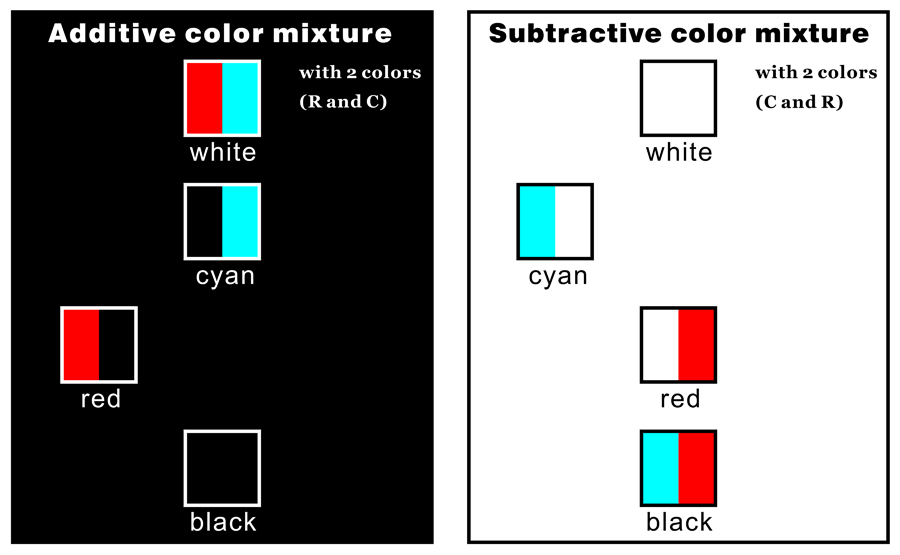
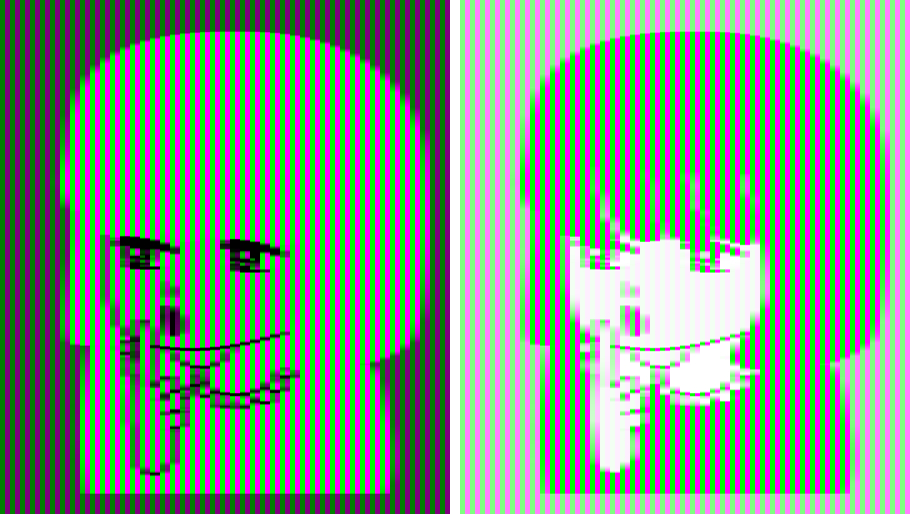
"White and black with green and magenta"
The hair and clothes in the left image appear to be whitish whereas those in the right one to be blackish, though they consist of the same green-magenta stripes.
Copyright Akiyoshi Kitaoka 2018 (May 20)

"White and black with blue and yellow"
The hair and clothes in the left image appear to be whitish whereas those in the right one to be blackish, though they consist of the same blue-yellow stripes.
Copyright Akiyoshi Kitaoka 2018 (May 20)
Spatial color mixture with two achromatic colors
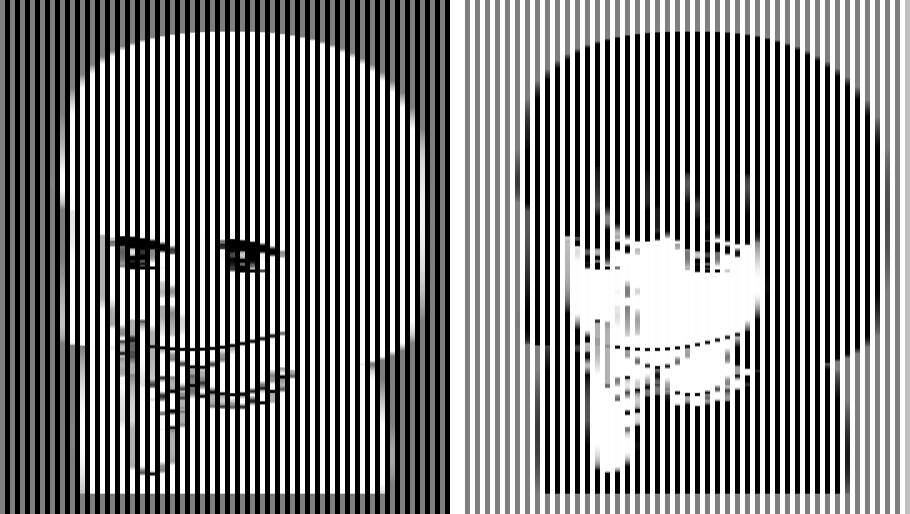
"White and black with white and black"
The hair and clothes in the left image appear to be whitish whereas those in the right one to be blackish, though they consist of the same blue-yellow stripes.
Copyright Akiyoshi Kitaoka 2018 (March 21)
Movie demo

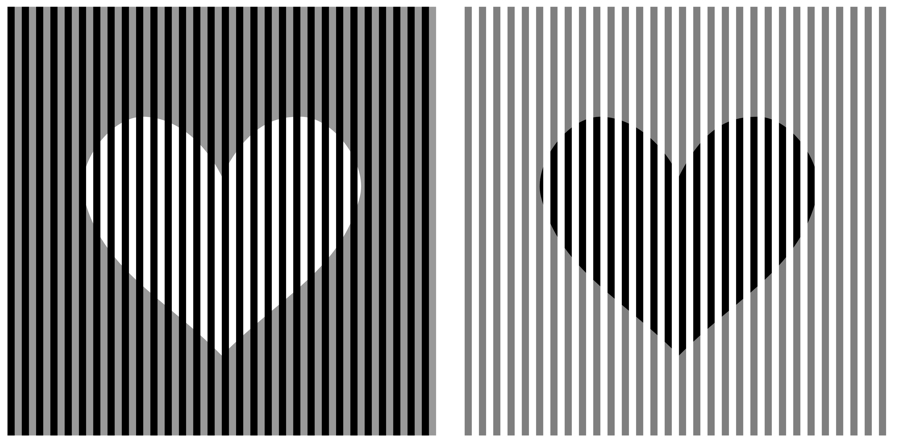
"White and black hearts with white and black stripes"
The heart in the left image appears to be whitish whereas that in the right one to be blackish, though they consist of the same white-black stripes.
Inside out↓

"A demo of White' effect"
The heart in the left image appears to be darker than that in the right one, though the gray stripes of the two hearts are the same luminance.

White' effect
The gray rectangles in the left image appears to be darker than those in the right one, though they are the same luminance.
White, M. (1979) A new effect on perceived lightness. Perception, 8, 413-416.
Suggestion: Continuation between spatial color mixture and White's effect is suggested.
The chromatic version of White's effect is called the Munker illusion.
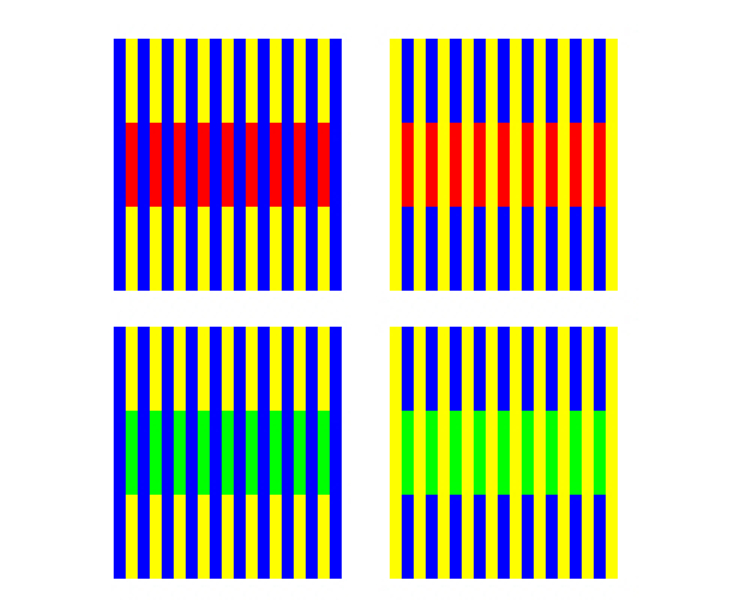
Munker illusion
Red-purple rectangles and orange ones appear to be embedded in the upper-left block and the upper-right one, respectively, though they are the same red. Bluish-green rectangles and yellowish-green ones appear to be embedded in the lower-left block and the lower-right one, respectively, though they are the same green.
Munker, H. (1970) Farbige Gitter, Abbildung auf der Netzhaut und übertragungstheoretische Beschreibung der Farbwahrnehmung. München: Habilitationsschrift.

"Magenta heart and orange one"
The heart in the left image appears to be red-purple (magenta) whereas that in the right one to be orange, though they consist of the same red stripes.
Copyright Akiyoshi Kitaoka 2018 (March 18)

Copyright Akiyoshi Kitaoka 2016 (March 21)
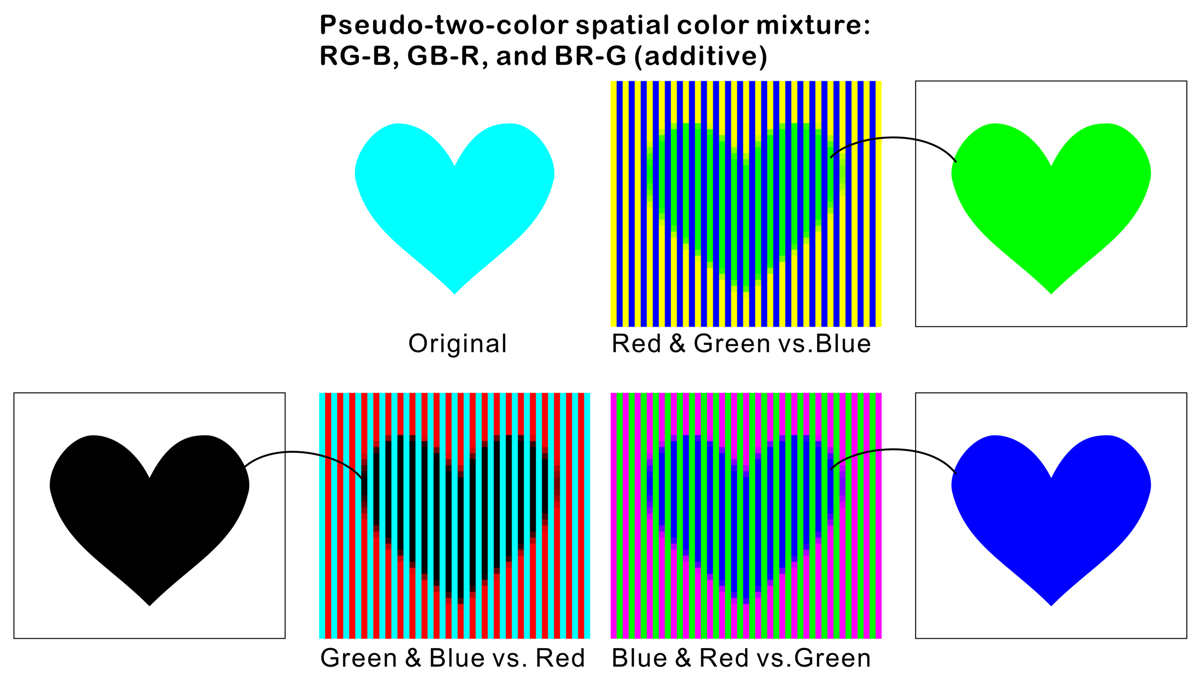
Copyright Akiyoshi Kitaoka 2017 (November 27)
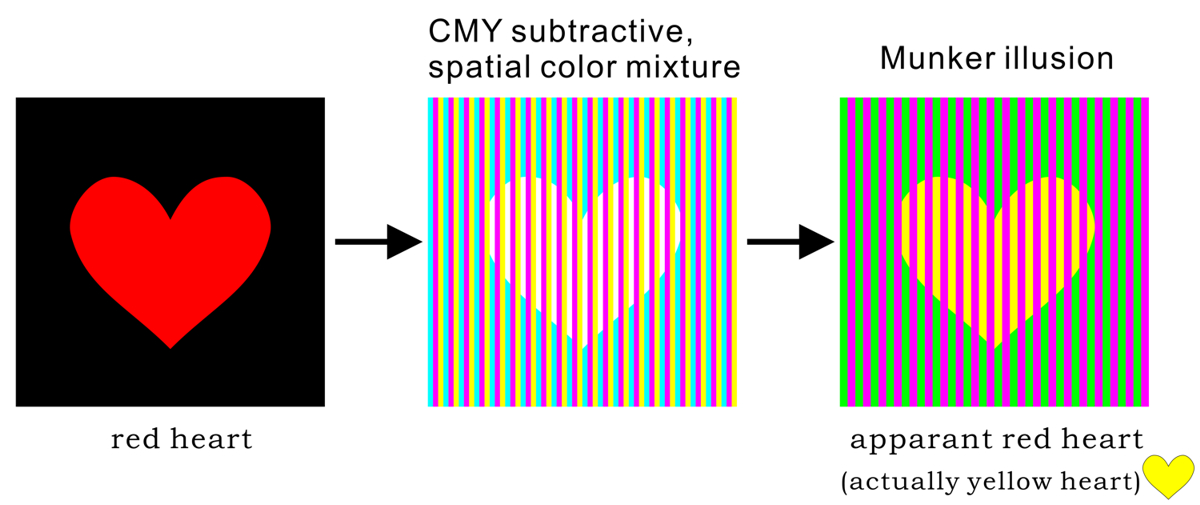
Copyright Akiyoshi Kitaoka 2016 (March 21)

"Relationship between additive (spatial) color mixture and the Munker
illusion"
Copyright Akiyoshi Kitaoka 2016 (March 22)

"Relationship between subtractive (spatial) color mixture and the
Munker illusion"
Copyright Akiyoshi Kitaoka 2016 (March 22)
Suggestion: Continuation between spatial color mixture and the Munker illusion is suggested.
Conclusion
There are two types of spatial color mixures in our visual system: the additive color mixture and the subtractive one. A close relationship to the Munker illusion or White's effect is pointed out. The histogram equalization hypothesis (Shapiro, Hedjar, Dixon and Kitaoka 2018) on color illusions supports understanding of these phenomena.

A demo of a variety of illusions I study